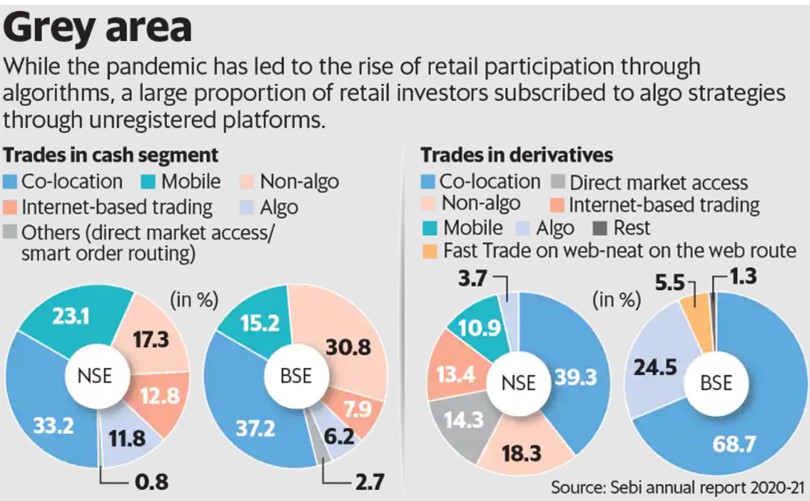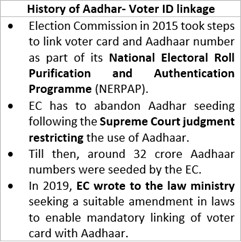Thursday, 23rd December 2021
Humanitarian assistance to Afghanistan
In News
The United Nations Security Council (UNSC) has unanimously passed a resolution permitting a carveout in sanctions against the Taliban to facilitate the delivery of humanitarian aid to Afghanistan.
About the News
- The Resolution covers urgently needed humanitarian assistance and other activities that support basic human needs in Afghanistan, such as those that primarily benefit poor or at-risk populations or otherwise relieve human suffering, including activities related to shelter and settlement assistance, food security, education, livelihoods support, energy, water, sanitation, health including COVID-related assistance, nutrition, and hygiene, among others
- India Supported UNSC Resolution to provide humanitarian assistance for Afghanistan. India has confirmed its intent to work with other nations in the region in providing assistance to Afghanistan.
What are the major outcomes of the resolution?
- It “calls on all parties” to respect human rights and observe international humanitarian law
- Aid and assistance should be provided to the most vulnerable section of the Afghanistan society focussing on women and children.
- Humanitarian assistance should be based on the principles of neutrality, impartiality, and independence and disbursement to the age should be non-discriminatory and accessible to all irrespective of ethnicity, religion, or political belief.
- India has voted in favour of UNSC resolution to grant exemption from sanctions for humanitarian assistance to Afghanistan.
Why assistance is important for Afghanistan?
- Half the population of Afghanistan facing acute food insecurity is a cause for concern.
- Fund crisis since Afghanistan has long been dependent on foreign aid and most of its foreign assets were frozen after the Taliban takeover.
- The humanitarian crises have been made worse by the continuing surge of COVID-19 with the fast-spreading Omicron
- Payment of funds, other financial assets or economic resources, and the provision of goods and services necessary to ensure the timely delivery of such assistance
- With country going below the poverty threshold assistance must be scaled importantly and unhindered access should be provided to the UN and other agencies.
- Failure of Taliban government to pay salaries for its public servants, hospitals, doctors, nurses, may lead to its collapse and resulting into chaos in the country.
What more can be done?
- Periodic updates by the UN Emergency Relief Coordinator to ensure assistance is reaching the intended objectives.
- Creating institutional mechanisms such that the assistance should reach the vulnerable ones first including women, children, and minorities without any possible diversion of the funds.
- Granting exceptions from sanctions for humanitarian assistance to Afghanistan.
- Although UN sanctions are an important tool to respond to threats and human rights abuses, but there is need to make sure that these sanctions do not hinder the delivery of urgently needed aid to the Afghan people.
Sources:
India’s Nuclear Energy Potential
In News
The Government of India has given “in-principle’’ approval for setting up of six nuclear power reactors at Jaitapur in Maharashtra and the construction of the Kudankulam Nuclear Power Plant (NPP) Unit 6 was launched recently.
Nuclear Energy exploitation by India
- India’s Three-Stage Program: India’s nuclear power program began in the 1950s with the establishment of the Department of Atomic Energy (DEA) and the launch of the Three-stage Program under nuclear scientist Dr. Homi Bhabha.
- first stage: setting up of natural uranium-fuelled pressurized heavy water reactors (PHWR);
- second stage: fast breeder reactors (FBRs) utilizing a uranium-plutonium fuel cycle;
- third stage: breeder reactors utilizing thorium fuel.
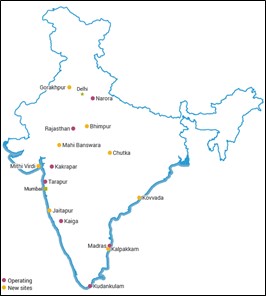
- This three-stage program was designed not only to produce nuclear power for fast development, but to move away from uranium dependence, given India’s very low reserves of uranium while utilizing India’s high thorium reserves, one of the highest “economically extractable” reserves in the world.
- Since, India was excluded from the 1970 Nuclear Non-Proliferation Treaty (NPT) due to it acquiring nuclear weapons capability after 1970, India has a largely indigenous nuclear power
- Currently, India has 23 reactors with a total capacity of 7480MW. A Prototype Fast Breeder Reactor being built Madras Atomic Power Station (MAPS) in accordance with the second stage, and research is going on for the third stage of thorium-based reactors.
- Construction of Kudankulam Nuclear Power described as a ‘flagship joint project’ that envisions building as many as 12 nuclear plants over the next 20 years and also the largest nuclear power station in India, started in 2002 with Russian support.
New Phase of nuclear development with Partnerships
- Following the Nuclear Suppliers Group agreement which was achieved in September 2008, the scope for sourcing both reactors and fuel from suppliers in other countries opened up for India, where the NSG agreed to exempt India from its requirement that recipient countries must have comprehensive IAEA safeguards covering all nuclear activities.
- Civil nuclear cooperation agreements have been signed with the USA, Russia, France, UK, South Korea, Czech Republic and Canada, as well as Australia, Argentina, Kazakhstan, Mongolia and Namibia.
- Kudankulam Nuclear Power, Tamil Nadu: The equipment required for the installation at Units 5& 6 at Kudankulam is being supplied now and the construction process is ongoing. This is being done with Russian support.
- Gorakhpur Haryana Anu Vidyut Pariyojana (GHAVP), Haryana: It is a project with four indigenous 700 MWe PHWR units in two phases.
- Kovvada in Srikakulam, Andhra Pradesh: It is to host six Westinghouse AP1000 units, which is an American nuclear power company.
- Jaitapur (JNPP) in Maharashtra's Ratnagiri district: Following a February 2009 general agreement with Areva, a French multinational, to build six EPR reactors with Alstom (French) turbine-generators, along with 25 years supply of fuel. On completion, it will be the country’s largest nuclear power generating site with a total capacity of 9,900 MW.
- India's installed nuclear power capacity has grown from 4,780 MW to 6,780 MW by 2021, an increase of over 40 per cent, in the last seven years.
- By 2024 India will have nine new nuclear reactors plus approval for 12 new additional ones with a capacity of 9000 MW. The government expects the country to have 22,480 MW by 2031.
Sources:
- Expanding Indo-Russian strategic partnership: Kudankulam Nuclear Power Plant launches construction of Unit 6: https://economictimes.indiatimes.com/industry/energy/power/expanding-indo-russian-strategic-partnership-kudankulam-nuclear-power-plant-launches-construction-of-unit-6/articleshow/88418348.cms
- Govt: ‘In-principle’ nod for 6 nuclear reactors in Jaitapur
- India Russia partnership in nuclear energy
- Nuclear Power in India
Kerala’s SilverLine Project
In News
Constant protests have been taking place across Kerala against SilverLine railway project.
About the news
- The SilverLine Project is one of the Kerala State Government’s biggest infrastructure projects.
- The project envisages trains running at 200 km/h between the state’s northern and southern ends has been opposed by the local population.
The SilverLine Project
- What is it? It is a 529.45-km railway line that will link Thiruvananthapuram in the south to Kasaragod in the north, covering 11 districts through 11 stations.
- Objective: Once the project is complete, one can travel from Kasaragod to Thiruvananthapuram in less than 4 hours at 200 km/hr, which on the existing Indian Railways network takes 12 hours.
- Implementation Agency: The project is being executed by the Kerala Rail Development Corporation Limited (KRDCL) and is estimated to be completed by 2025.
- KRDCL, or K-Rail, is a joint venture between the Kerala government and the Union Ministry of Railways to execute big railway projects.
- Need for the SilverLine project: The existing railway infrastructure in Kerala is believed to be not efficient enough to meet the demands of the future.
- This is because, most trains run at an average speed of 45 km/hr owing to a lot of curves and bends on the existing stretch.
- The project is claimed to take a significant load of traffic off the existing stretch and make travel faster for commuters, which in turn will reduce congestion on roads and help reduce accidents.
- It will also reduce greenhouse gas emissions, help in expansion of Ro-Ro services, produce employment opportunities, integrate airports and IT corridors, and enable faster development of cities it passes through.
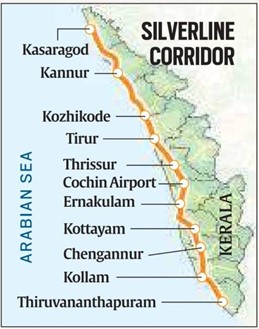
- Features:
- The project will have trains of electric multiple unit (EMU) type, each with nine cars (that can seat 675 passengers) extendable to 12.
- The trains can run at a maximum speed of 220 km/hr completing journeys in either direction in under four hours.
- The railway line, beginning from Thiruvananthapuram, will have stations in Kollam, Chengannur, Kottayam, Ernakulam (Kakkanad), Cochin Airport, Thrissur, Tirur, Kozhikode and Kannur before culminating in Kasaragod.
- Of the 11 stations, three will be elevated (Thiruvananthapuram, Ernakulam and Thrissur), one underground (Kozhikode) and the rest at grade.
- Concerns against the project:
- Fear of Debt: There is a prevailing fear that the project would sink the state further into debt.
- Displacement of people: The project would lead to displacement of over 30,000 families.
- Environmental Impacts: The project is believed to cause great environmental harm as its route cuts through precious wetlands, paddy fields and hills. The building of embankments on either side of the major portion of the line will block natural drainage and cause floods during heavy rains.
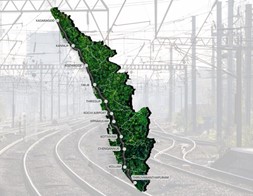
Source:
National Farmer’s Day
On December 23, 1902 Chaudhary Charan Singh was born. December 23 every year is celebrated as 'Kisan Diwas' in India to mark the birth anniversary of fifth prime minister of India, Chaudhary Charan Singh. India has been celebrating Singh's birthday as National Farmers Day since 2001 The day celebrates the farmers and their work in the country. It marks the contribution of the former prime minister to the agricultural reforms of India. Singh was given the sobriquet ‘Champion of India’s Peasants’ for his work towards upliftment of farmers and development of agriculture throughout the country. He also authored several books on farmers' upliftment. Some prominent titles are - ‘Abolition of Zamindari’, ‘Co-operative Farming X’, ‘Prevention of Division of Holdings Below a Certain Minimum’. Almost half of India’s rural households have insignificant stakes in agriculture. According to 2019 Situation Assessment Survey (SAS), there are 93.1 million agricultural households in rural India.
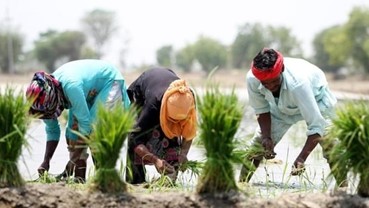
Source:
Data Protection in India
In News
Recently, a joint parliamentary committee (JPC) tabled its report on the Personal Data Protection Bill 2019 in both Houses of Parliament.
About the News
- The JPC report which reviewed the country's first data protection law, Personal Data Protection Bill, 2019, contains a new version of the Data Protection Law titled as 'The Data Protection Bill, 2021.'
- The proposal for a data protection law came after the Supreme Court declared in Puttuswamy Judgement (2017) that privacy is a fundamental right and directed the government to come up with the data protection regime.
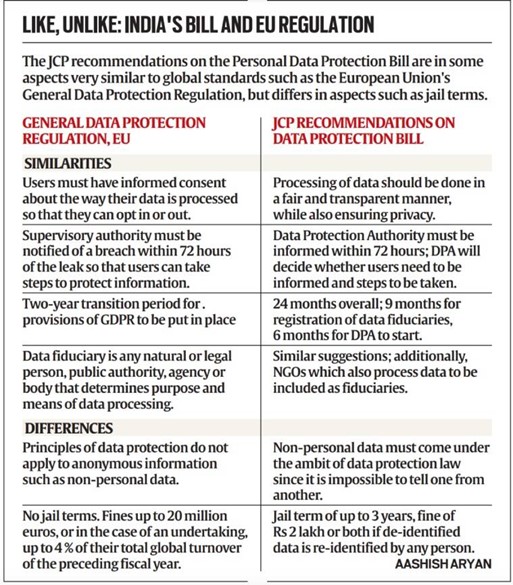
What is Personal Data?
The Personal Data Protection Bill, 2019 defines Personal Data as data about or relating to a natural person who is directly or indirectly identifiable, having regard to any characteristic, trait, attribute or any other feature of the identity of such natural person, whether online or offline, or any combination of such features with any other information, and shall include any inference drawn from such data for the purpose of profiling.
Need for Data Protection
- India’s Growing Data: India generates about 150 exabytes of data annually and is amongst the fastest growing data generating nations in the world.India already has many data assets of national importance including Aadhar, Passport Seva, Open Data Stack (data.gov.in), MCA21, GSTN, UPI, DISHA, Bhuvan(ISRO) etc.
- Data Protection as a Global Concern: The reality of the digital environment today, is that almost every single activity undertaken by an individual involves some sort of data transaction or the other. This has led to the issues in collection, storage, processing and usage of data.
- Dwindling Consumer Trust: The rapid use of personal data has resulted in undermining the end used trust and confidence. Concerns and tensions about misuse of sensitive and critical personal is rising exponentially.
- Proliferation of Bots and Fake Accounts: These Bots and accounts can push a certain agenda or person, carry malicious campaigns, promote digital scams and even conduct organized phishing and blackmailing.
- Impact of Data Breach on Mental health: As much as 86 per cent felt worried, angry and frustrated, while 85 per cent experienced disturbed sleeping habits due to fear of Data Breach.
- Data Security is key to National Security: There are several instances where social media has instigated people across the globe to plan, organize and execute revolutions, protests, riots and spread violence. Example: The ‘Colonial Grid Attack’ on the USA, where the U.S. power grid was attacked.
About the Personal Data Bill, 2019
The Personal Data Protection Bill, 2019 was introduced to provide for protection of personal data of individuals. Important Provisions of the Bill are:
- Data storage: Personal data can be transferred outside India. Sensitive personal data have to maintain at least one local copy in India. Critical personal data (to be notified by the central govt.) is to be stored in India and cannot be transferred outside, except for health emergencies or as notified by the central govt. or the authorities.
- Penalties and compensation: Fines upto INR5 crores or 2 per cent of total worldwide turnover, whichever is higher for lower level offences. Fines upto INR15 crores or 4 per cent of total worldwide turn over, whichever is higher for higher level offences.
- Any offence punishable under PDPB will be cognisable and non-bailable.
- Data principal rights: In addition to the existing rights, 'Right to Erasure has been added for data that is no longer necessary. (‘Data principal’ means the natural person to whom the personal data relates)
- Data processing of children (less than 18 years of age): Age verification and obtaining consent from parent/ guardian is mandatory. Data fiduciaries operating on commercial websites directed at children; or processing large volume of personal data of children to be classified as guardian data fiduciaries and are prohibited to profile or monitor these children.
- Data audits: Significant data fiduciaries will have their data processing environment audited annually by an independent data auditor.
- Obligations of significant data fiduciaries: Appoint a Data Protection Officer. Register with the authority as prescribed. Have data audits on its policies and conduct of processing personal data. Conduct Data Protection Impact Assessments
- Grounds of processing: Sensitive data to be processed only on grounds of Medical emergency, With consent, Functions of state, Compliance to law or court or tribunal, Law in force for the time being, Treatment for epidemics and during disasters.
- The Draft Data Protection Bill, 2021 has recommended to expand the right to be forgotten for processing as well which was previously limited to only disclosure.
What are the Recommendations of the JPC on the Personal Data Protection Bill, 2021
- Non-Personal too: The key recommendations that changes the nature of the Bill itself is for inclusion of non-personal data within the larger umbrella. The reason, the committee said, was that it was impossible “to distinguish between personal data and non-personal data, when mass data is collected or transported”. This means that all issues under the new legislation will be dealt with by a single Data Protection Authority (DPA) instead of separate ones for personal and non-personal.
- Transition Period: To ensure that all data aggregators get ample time to comply with the rules under the new Bill, the JCP suggested that up to 24 months be given from the date of notification of the Act. All data fiduciaries that deal exclusively in children’s data have to register themselves with the DPA. For this, a period of 9 months from the notification of the Act has been suggested.
- Social Media Liability: Social media platforms that do not act as intermediaries should be treated as publishers, and therefore be held liable for the content they host.
- Penalty: The committee has recommended a fine of up to Rs 15 crore or 4% of the total global turnover of the firm for data breaches, and a jail term of up to 3 years if de-identified data is re-identified.
- Timely Alert: In case of any data breach, the data aggregator or fiduciary must notify the DPA within 72 hours of becoming aware of it. The DPA shall then decide the quantum of severity of the data breach and accordingly ask the company to report it and “take appropriate remedial measures”.
- Powers of the Government: JPC Report has retained the controversial clause exempting the Governmental agencies from the purview of the law with a minor change. The central government should have absolute power over the Data Protection Authority (DPA) and be able to exempt any government body from the provisions of the bill citing 'just, fair, reasonable and proportionate procedure'.
Concerns and Challenges in implementation of the Data Protection Bill, 2021
- Change in Scope of the Bill: Expansion in the regulatory ambit to regulate "non-personal data" may lead to misuse of the Clause 92 which states, "Nothing in this Act shall prevent the Central Government from framing any policy for the digital economy, including measures for its growth, security, integrity, prevention of misuse, and handling of non- personal data including anonymised personal data."
- The obligation to appoint data protection officers has always been cast upon significant data fiduciaries, but the new draft clarifies that these officers must belong to the C-suite of the company. When applied in the context of global internet businesses providing services to customers in India, it seems to suggest that only the chief executive officer, chief financial officer or a whole-time director of the overseas company providing the service can be appointed as a data protection officer for India.
- Children’s Personal Data: Several countries have adopted a graded approach by recognising differing maturity levels among children. The United States requires parental consent only below the age of 13, while the EU suggests an age range of 13-16 years. In contrast, the amended Bill retains the approach adopted under the PDP Bill 2019 and requires parental consent for any person under the age of 18. The JPC’s approach may erect significant barriers to the development of innovative online services.
- The Justice B N Srikrishna panel had proposed an appointment committee consisting of judicial members, with the Chief Justice of India as chairperson, to choose members of the Data Protection Authority. As per the draft Data Protection Bill, 2021, the Attorney General, an expert, a director of an IIT, and a director of an IIM are included in the selection panel. This does not address the problem that the Centre appoints the nominees at its pleasure. Further, choice extends to the government in picking any one director from the multiple IITs and IIMs.
Conclusion
The constitutional principle of a data protection law has been set out in the Justice K S Puttaswamy judgment by the Supreme Court of India that reaffirmed the fundamental right to privacy. Justice D Y Chandrachud stated that the “creation of such a regime requires a careful and sensitive balance between individual interests and legitimate concerns of the state.”
The JPC report comes at a time when India is deliberating a new governance framework for the flow of information on social media. The digital landscape is rife with tension and companies are waiting for regulatory clarity to structure their businesses. In this state of flux, JPC’s report only creates more confusion rather than clarity.
Question:
Discuss the need for an effective data protection regime in India. How effective can the Data Protection Bill, 2021 be in achieving this endeavour?
Sources:
- Explained: JCP prescription for data Bill
- 17_Joint_Committee_on_the_Personal_Data_Protection_Bill_2019
- What is Personal Data According to the GDPR?
- Draft Personal Data Protection Bill, 2019
- Personal Data Protection Bill : What Does Joint Parliamentary Committee Report Say?
- India’s Personal Data Protection Bill, 2019 Infographic
- The data protection bill’s reduced emphasis on privacy
- JPC report on data protection bill has loopholes & more bad news for social media companies
Sculptures of Goddess
This is image of the sculpture found at Irumbedu in Chengalpattu district, at 5th century AD. Three sculptures hasve been found. Two have been identified as the sculptures of Goddess Vinayaki, the female form of Lord Vinayaka, and Lakulisa, the preceptor of Pasupatha school of Shaivism. The figure in the third sculpture is yet to be firmly ascertained. One was that of Goddess Vinayaki, which is rarely found in Tamil Nadu. The other was worshipped as Goddess Durgai Amman. All the three sculptures had the same inscriptions that read, ‘Cheyam Patta Mutthira Varikan Madavathi’. This indicated that the sculptures were donated to the village by a person named Mutthira Varikan Madavathi to mark his victory.

Source:
Pralay Missile
- Context: The Defence Research and Development Organisation (DRDO) has successfully carried out the maiden test of Pralay missile.
- ‘Pralay’ is a surface-to-surface conventional quasi-ballistic missile. It will be the longest-range surface-to-surface missile in the inventory of the Army
- A quasi-ballistic missile has a low trajectory, and while it is largely ballistic, it can manoeuvre in flight.
- The missile has a range of 150-500 kilometres and has been developed according to specifications of the Army.
- The missile is powered with a solid propellant rocket motor and multiple new technologies and is capable of being launched from a mobile launcher.
- While cruise missiles have high agility, stealth and even loitering capability, ballistic missiles have the advantage of speed and countering them is a very difficult task even for modern air defence systems.

Source:
- Why Pralay quasi-ballistic missile, tested by DRDO today, will be a ‘game-changer’ for Army
- 'Pralay', India's first conventional ballistic missile, test-fired again
Image Source:
‘Fan Tokens’
- Context: Paris St Germain (PSG) has said fan tokens were a "significant" part of Lionel Messi's welcome package, with a value of 25-30 million euros ($29-35 million).
- Fan Tokens are a type of NFT (non-fungible token) which is a digital-only asset.
- Like Bitcoin and similar digital currencies, fan tokens are volatile assets and their value can drastically change overnight.
- Fans can purchase the said crypto tokens with real-world money to gain access to exclusive content and augmented-reality games.
- Among other rewards and perks, the fan token holders also get to vote on mostly minor decisions related to their clubs.
- These fan tokens are created by a crypto platform called Socios.
- The decisions fans can vote on include kit designs, goal music, the team’s destination for a pre-season tour. The more tokens a fan has, the more votes they get in the polls. Ultimately though, the polls are decided upon by the clubs.

Source:
- Explained: What are ‘fan tokens’, the cryptocurrency in Lionel Messi’s PSG package?
- What Are Fan Tokens? Find Out How They Work And Their Difference From NFTs
Image Source:
Open Acerage Licensing Policy
- Context: India has offered 8 oil and gas blocks, mostly in Assam, for bidding in the seventh bid round of Open Acreage Licensing Policy (OALP).
- OALP gives an option to a company to select the exploration blocks on its own,without waiting for the formal bid round from the Government.
- Under OALP, a bidder intending to explore hydrocarbons (like oil and gas, coal bed methane, gas hydrate etc.) may apply to the Government seeking exploration of any new block which was not already covered by exploration.
- The Government will examine the expression of interest and if it is suitable for award, then the govt will call for competitive bids after obtaining necessary environmental and other clearances.
- OALP was introduced as part of the new fiscal regime in exploration sector called Hydrocarbon Exploration and Licensing Policy (HELP) in 2016 to enable a faster survey and coverageof the available geographical area which has potential for oil and gas discovery.
- What distinguishes OALP under HELP from New Exploration and Licensing Policy (NELP) of 1997 is that under OALP, oil and gas acreages will be available round the year instead of cyclic bidding rounds as in NELP.
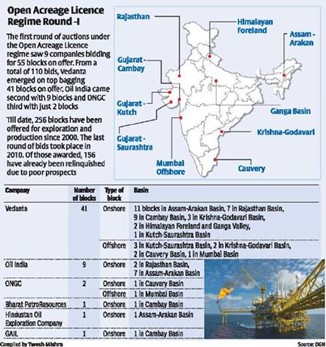
Source:
Image Source:
Paxlovid
- Context: Pfizer pill ‘Paxlovid’ has become the first US-authorized home COVID treatment.
- It is an antiviral Covid-19 treatment drug which is administered in combination with low dose HIV medicine ritonavir.
- It is an oral pill that will be used for faster treatment of early COVID-19 infections with its mild side effects and superior effectiveness.
- It brings nearly 90% reduction in hospitalizations and deaths among patients who are most likely to get severe disease.
- The drug has been authorized by The Food and Drug Administration for adults and children ages 12 and older with a positive COVID-19 test and early symptoms with highest risks of hospitalization.
- It also includes older people and those with conditions like obesity and heart disease, though the drug is not recommended for patients with severe kidney or liver problems.
Source:
- Pfizer pill ‘Paxlovid’ becomes first US-authorized home COVID treatment
- Explained: What is the process for Pfizer’s Covid oral drug Paxlovid to come to India?
Image Source:
Can socially responsible investing save the world?:IE
Essence: The article talks about creating socially responsible investing (SRI) and how the concept of fiduciary duty could be used to achieve it. It has been a long trend around the globe to keep profits ahead of planet and it is important to understand that they can’t go hand in hand.
To change the trend, it is imperative to understand that fiduciary duty doesn’t involve the responsibility just for the company and the profits but also the duty towards the planet. It wouldn’t be exaggeration to claim that climate change has actually acted as a catalyst to take SRI seriously which have the potential to reform the capitalism from within.
Why you should read this article?
- To understand the concept of socially responsible investing.
- To understand why profit and planet couldn’t go hand in hand.
Source:
Looking beyond the Forest Rights Act: TH
Essence: Although the Forest Rights Act (FRA) has been in place for 15 years, its implementation has never been easy. Although the Act establishes democratic principles in the implementation process, this process is not transparent. Even though the FRA guarantees women equal rights at all stages of decision-making, they are seldom visible in this regard. In general, we are dealing with two types of issues: first, difficulties in implementing the FRA; and second, a decline in the quality of forest output due to a variety of factors, affecting lives.
Several non-governmental organisations (NGOs) working in tribal regions proposed promoting horticulture methods and improving the quality of education for youths as just two of the many alternatives. To enhance the condition of tribal people, existing schemes and programmes for tribal people must be properly implemented across the country. Furthermore, at every stage of the decision-making process, persons who are sensitive to the cause of tribal people should be included, as the FRA was never going to be a panacea for all of the tribal people's problems, despite being crucial answers.
Why should you read this article?
- To comprehend the problem with the FRA's implementation and the resulting deterioration in the quality of forest output.
- To determine what solutions might be available to address the plight of India's tribal people.
Source:
Combatting air pollution in Northern India: Cooperative federalism is the way forward: ORF
Essence: The winter air pollution which was once a major concern for Delhi and NCR has now expanded over other north Indian states and has reached as far as West Bengal. There are various meteorological as well as anthropogenic factors responsible for the worsening air quality. In view of the complexity of the problem, a collaborative approach by the stakeholders is the need of the hour rather than the blame shifting.
The ‘Commission for Air Quality Management in the National Capital Region and Adjoining Areas Bill 2021’ is an attempt by the parliament, the Enforcement Task Force created by Supreme court are few steps taken in this direction, to control Air Pollution in NCR and adjoining areas. To further the cause of mitigation of air pollution cooperative federalism along with having a strong leadership to drive forward the policies and actions is needed. All the states should act responsibly in creation of a multi-stakeholder regional cooperation forum, which intends to build on the work already done by various expert groups and authorities to develop concrete regulatory, technology-based solutions.
Why you should read this article?
- The article talks about the various factors responsible for Air Pollution around North India and efforts of different organs of government to control it.
- The article talks about the importance of co-operative federalism and collaborative approach by the stakeholders in mitigation efforts.
Source:
Construction with Conservation
Background:
- With the intention of conservation, a person can enable oneself to co-exist with nature
- To make sure that no tree was cut down to build his dream home, Udaipur businessman Kul Pradeep Singh built a home atop a 40-foot mango tree.
- He’s even found a mention in the Limca Book of Records.
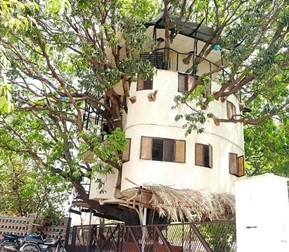
How was such a house constructed?
- When Singh was in search of a plot in Udaipur, he had decided that he wouldn’t harm any trees in this area.
- Instead of uprooting the trees, he dedicated myself to constructing a house on one. The tree was around 20-feet-tall when the plot was bought, and the house was built with two floors around it.
- The entire structure is made of steel and the walls and floors of the house are made of cellulose sheet as well as fibre. Four pillars are placed around the tree, which act as an electric conductor during lightning.
- He makes necessary changes in the structure according to the growth of the tree. The tree in turn is flourishing and the family is rewarded by the tree with fresh mangoes every summer.
- Seeing this model, interested people have contacted him to build a similar home.
- This treehouse has found its name in the Limca Book of Records and is visited by many tourists.
Quote:
"In every walk with nature one receives far more than he seeks.": John Muir
Source:
Share the article
Get Latest Updates on Offers, Event dates, and free Mentorship sessions.

Get in touch with our Expert Academic Counsellors 👋
FAQs
UPSC Daily Current Affairs focuses on learning current events on a daily basis. An aspirant needs to study regular and updated information about current events, news, and relevant topics that are important for UPSC aspirants. It covers national and international affairs, government policies, socio-economic issues, science and technology advancements, and more.
UPSC Daily Current Affairs provides aspirants with a concise and comprehensive overview of the latest happenings and developments across various fields. It helps aspirants stay updated with current affairs and provides them with valuable insights and analysis, which are essential for answering questions in the UPSC examinations. It enhances their knowledge, analytical skills, and ability to connect current affairs with the UPSC syllabus.
UPSC Daily Current Affairs covers a wide range of topics, including politics, economics, science and technology, environment, social issues, governance, international relations, and more. It offers news summaries, in-depth analyses, editorials, opinion pieces, and relevant study materials. It also provides practice questions and quizzes to help aspirants test their understanding of current affairs.
Edukemy's UPSC Daily Current Affairs can be accessed through:
- UPSC Daily Current Affairs can be accessed through Current Affairs tab at the top of the Main Page of Edukemy.
- Edukemy Mobile app: The Daily Current Affairs can also be access through Edukemy Mobile App.
- Social media: Follow Edukemy’s official social media accounts or pages that provide UPSC Daily Current Affairs updates, including Facebook, Twitter, or Telegram channels.



